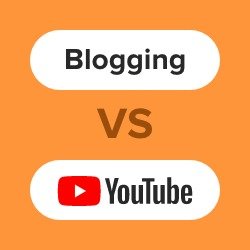In today’s digital landscape, video has become a dominant format in terms of consuming content. Platforms like YouTube and Facebook have witnessed exponential growth in video consumption, surpassing traditional mediums like blogging and textual content. This shift in consumer preference can be attributed to factors such as convenience, engagement, and the ability to convey information effectively.
The Difference Between Blogging and YouTube

When comparing blogging and YouTube as content channels, it becomes evident that the major distinction lies in the format. While blogging relies on written text and images, YouTube offers a more immersive experience through video content. This difference in format impacts how the audience perceives and engages with the content.
Instant Information Delivery
One of the key advantages of video format is its ability to deliver instant information. For quick updates or small pieces of information, users can easily consume videos without having to read lengthy articles or blog posts. This makes video a preferred choice for users seeking immediate and concise information.
Enhanced Readability
Video content also enhances readability by presenting information in a visually appealing manner. Rather than going through paragraphs of text, users can rely on subheadings, graphics, and animations to grasp the main points. This makes it easier for viewers to retain information and engage with the content.
The Growth of Video Content
When it comes to growth, YouTube has witnessed tremendous success. According to a recent study by Money Control, YouTube receives a staggering 1.8 million daily traffic visits. This showcases the popularity and reach of video content among users. However, it is important to note that blogging still holds its own audience and continues to grow alongside video content.
Niche-specific Content
One advantage that blogging offers over YouTube is the ability to cater to niche-specific audiences. While YouTube has a wide range of content, blogs can focus on specific topics and target a more specialized audience. This targeted approach allows bloggers to attract loyal readers who are genuinely interested in the content.
Increased Traffic Penetration
Another notable aspect is the traffic penetration of video content. Platforms like YouTube have a global reach, allowing content creators to tap into international audiences. This creates opportunities for content to go viral and reach a larger user base. In contrast, blogging may have limitations in terms of reaching a global audience.
Conclusion
Overall, the video format has had a profound impact on content growth. While YouTube experiences exponential growth, blogging continues to thrive in its own niche. Both formats offer unique advantages and cater to different audience preferences. As the digital landscape evolves, it is crucial for content creators to adapt and leverage the strengths of each format to maximize their reach and engagement.

